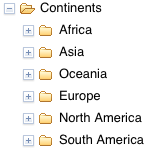Pimcore is definitely a fantastic CMS and PIM platform, so wouldn’t it be wonderful if there was an easy way to render your pages or products into downloadable PDFs? Well, there is!
Continue reading “Web to print with Pimcore and Wkhtmltopdf” »
Pimcore is definitely a fantastic CMS and PIM platform, so wouldn’t it be wonderful if there was an easy way to render your pages or products into downloadable PDFs? Well, there is!
Continue reading “Web to print with Pimcore and Wkhtmltopdf” »
I fredags presenterades vinnarna av Constantinus Award, som är Österrikes mest prestigefyllda konsult- och IT-pris, och Pimcore vann i kategorin ”Bästa open source”.
På Respondify har vi följt Pimcores utveckling noga och använt CMS-plattformen i över två år, så vi är förstås glada att plattformen får den uppmärksamhet den förtjänar!
Extern länk: Constantinus Award 2012: Das sind die Sieger!
 Under Vitalis-banketten utsågs med pompa, ståt och konfetti-regn vinnarlaget i app-tävlingen VitalisHack2012. Nio utvalda lag kämpade mot klockan under 24 timmar, och när slutsignalen gick på tisdagen enades juryn om att belöna vår app ”Läkemedelskollen” med första pris.
Under Vitalis-banketten utsågs med pompa, ståt och konfetti-regn vinnarlaget i app-tävlingen VitalisHack2012. Nio utvalda lag kämpade mot klockan under 24 timmar, och när slutsignalen gick på tisdagen enades juryn om att belöna vår app ”Läkemedelskollen” med första pris.
Enligt motiveringen levererades en ”professionellt presenterad lösning, där laget visar att de har kommit långt i utformningen av olika funktioner”
Förutom undertecknad från Respondify, bestod laget även av Daniel Carlzon – ST-läkare i klinisk farmakologi, Sara Renström – design-forskare med fokus på användarvänlighet, och Christopher Evans – marknadsförare i medicinteknikbranschen.
För att en app ska bli framgångsrik krävs två viktiga faktorer – attention och retention.
En attention-getter kan vara ett varumärke, en spännande ny teknisk innovation, en snygg ikon, snack/brus i sociala medier, en plats på någon topplista, uppmärksamhet i media mm. Den gemensamma nämnaren är att det är något som gör användaren medveten om att appen finns och lockar till nedladdning. Dessa effekter kan ofta vara självförstärkande.
Användarna är dock väldigt illojala mot nya appar – var fjärde app som laddas ner används bara en gång. Attention-getters är utmärkt för att få folk att ladda ner den, men det behövs en retention-faktor för att användarna ska återkomma till appen. Vad är det? Och hur skapar man det?
Continue reading “Hur gör man en bra och framgångsrik smartphone app?” »
Put your trivia knowledge to the test in the new Swedish iPhone game Quizkey. Besides answering questions, you can also create your own and hiss or diss existing. In Quizkey, the players shape the game.
Continue reading “Players rule in new quiz game for iPhone” »

Want to customize your cover- and profile picture on Facebook? The new Facebook Timeline lets you add a cover picture shown above and behind your profile picture. People have already begun to explore different creative ways of combining the cover picture with their profile picture.

When creating Android applications you sometimes need to fetch data from servers, create game event loops or get information from web sites. Since Java’s IO operations are blocking, there is a risk of freezing the application if you try to do these time consuming operations directly in the UI thread. This can result in getting an ANR, which is short for Application Not Responding, a dialog that appears after the application has been frozen for 5 seconds and where the user has the option to kill the entire application.
An obvious solution is to run these operations in a separate thread but when you need to update the UI you can not do this from any other thread then the UI thread or you will run into problems. This is because the UI thread is not thread-safe.
Continue reading “Threads, handlers and AsyncTask: efficient asynchronous programming in Android” »

The Dojo Object Store API is the emerging standard for supplying data to dojo widgets. Based on the W3C’s IndexedDB object store API, that we will start seeing native browser support for as HTML5 gets adopted, it provides a solid, uniform and light-weight data layer used to shuttle any kind of data to any kind of widget.
While there are many good resources on how to use the API client side, there is much less written on how to support a JsonRest Object Store server side. In fact, any server that can send JSON-encoded objects in a RESTful way would work as a backend for dojo.store.JsonRest. The SitePen Blog has an example using Spring/Java. This post will give an example of how to implement a dojo.store.JsonRest backend using PHP and the Zend Framework.
Continue reading “Creating a dojo.store.JsonRest backend server using ZendFramework (PHP)” »

A colleague asked me today how a dijit.Tree can be used with the new dojo.store architecture, which will supersede the legacy dojo.data architecture. Every tutorial he found on the web used ItemFileReadStore, which implements the old standard. Later that day I stumbled upon a similar question on StackOverflow and realized that a short write-up might benefit others as well.
Continue reading “Using dijit.Tree with the new Dojo Object Store (dojo.store)” »

Persevere is not a single monolithic web server like Apache. Rather, it’s a set of server apps – or JSGI middleware – working together. While this is very powerful in terms of flexibility and extensibility, it complicates the installation process. Installing Persevere has become much easier with tools such as Nodules, however, the whole process might still not be for the faint-hearted.